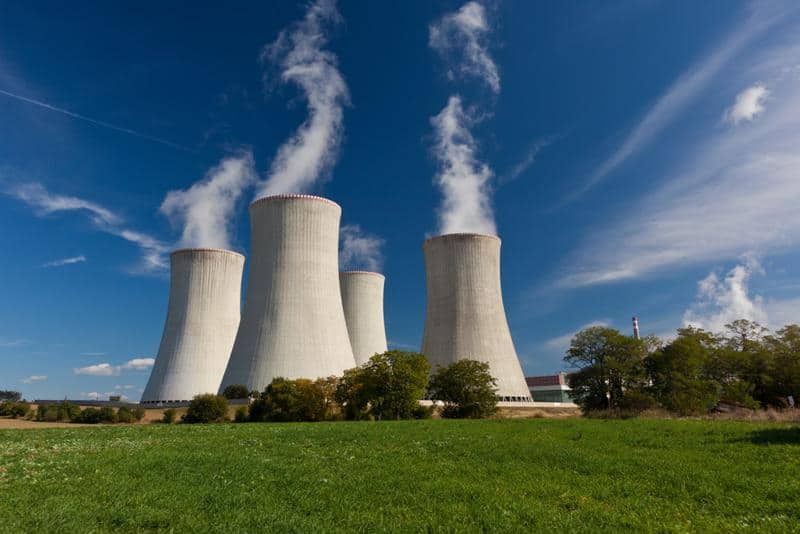Condensing Economizers Can Help Operations Reclaim Latent Heat
Leave a CommentBoilers involve a lot of energy and heat, much of which can be wasted if a system isn’t designed to prevent this. One way to capture and reuse lost heat is through installing a condensing economizer. This item captures water vapor and heat, turning it into usable energy.
Condensing economizers have a place in virtually every industry. Food processing plants, greenhouses, pulp and paper mills, hospitals and even district heating systems all utilize boilers and have the potential to use economizers. Investing in one can reduce energy requirements and cut operational costs.
However, condensing economizers typically don’t come in a one-size-fits-all format. They often require highly specialized design and are fabricated to meet the specific needs of one facility’s operations.
How Condensing Economizers Work
In most natural gas-fired boilers, it’s tough to cool flue gas much lower than 250 degrees Fahrenheit, according to the U.S. Department of Energy. Beyond this point, the gas can begin to condense, and the resulting vapor can become corrosive, posing a threat to the integrity of the stack or stack liner. However, for the flue gas to be captured and used as boiler feedwater, it needs to be cooled below its natural dew point of 135 degrees Fahrenheit.
Condensing economizers collect flue gas and cool it to the appropriate temperature, allowing the economizer to reclaim sensible heat (in the form of flue gas) and latent heat (in the form of flue gas water vapor). The amount of latent heat that’s recoverable depends on the type of fuel used, the style of condensing economizer used and other factors.
Types of Condensing Economizers
There are two types of condensing economizers that plant managers or other decision makers can choose from: direct and indirect.
A direct contact condensing economizer includes a vapor-conditioning chamber that’s connected to a countercurrent spray chamber, the Department of Energy explained. Inside the spray chamber, droplets of cool fluid come into contact with the hot gas to facilitate the heat exchange. The droplets cool the stack gas. This option provides a high heat transfer rate and allows for relatively easy water recovery, though this method can only heat water to about 140 degrees Fahrenheit. This style requires a mist eliminator, which prevents droplet carryover.
An indirect contact condensing economizer utilizes a shell and tube heat exchanger to capture the flue gas. This style offers greater heating and cooling capacity; water can be heated to as much as 200 degrees Fahrenheit and cooled to as low as 75 degrees Fahrenheit.
One example of an indirect contact condensing economizer successfully helping reduce costs and energy requirements was detailed by the Department of Energy. A food processing facility wanted to reduce its deaerator steam requirements, which were 5,000 lbs per hour. The company installed the economizer, which served to lower flue gas temperatures from 300 degrees Fahrenheit to 120 degrees Fahrenheit. The process allowed them to capture 2 million British Thermal Units per hour, and effectively cut its deaerator steam requirements down to 1,500 pounds per hour.
Considerations for Condensing Economizers
For both direct and indirect contact condensing economizers, the water exiting the system is usually very acidic and should be neutralized before being used as process water or directed to a sewage system. External heat exchangers, membranes or pH control systems are all viable options for this.
Choosing the right materials of construction is an important aspect of designing a heat recovery system with an economizer. Because the water vapor can be highly acidic or otherwise corrosive, the fabrication materials should be resistant to wear. Stainless steel and similar alloys typically hold up well when exposed to water vapor that comes as a result of hydrocarbon fuel combustion, which is the case with natural gas-fueled boilers.
The space in which the economizer will be used should also be carefully analyzed. For operations where most of the deaerator steam comes from blowdown heat recovery, there is limited potential for cost savings with an economizer. Additionally, operations where there isn’t much need for cold or low-temperature water, a direct contact condensing economizer won’t be especially helpful.
Working with heat exchanger experts such as those at Enerquip can help you determine your needs and the potential for heat recovery at your facility. Enerquip’s engineers will help you design a shell and tube heat exchanger that suits your specific operation. Request a quote, today.

